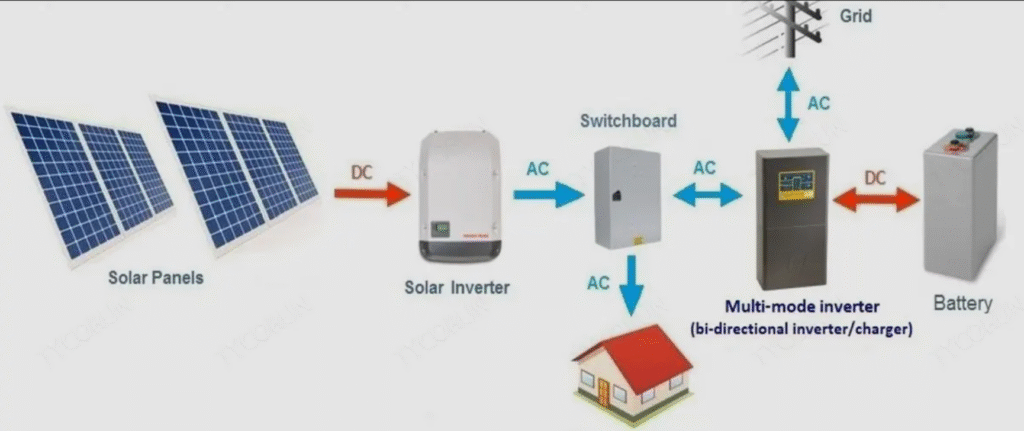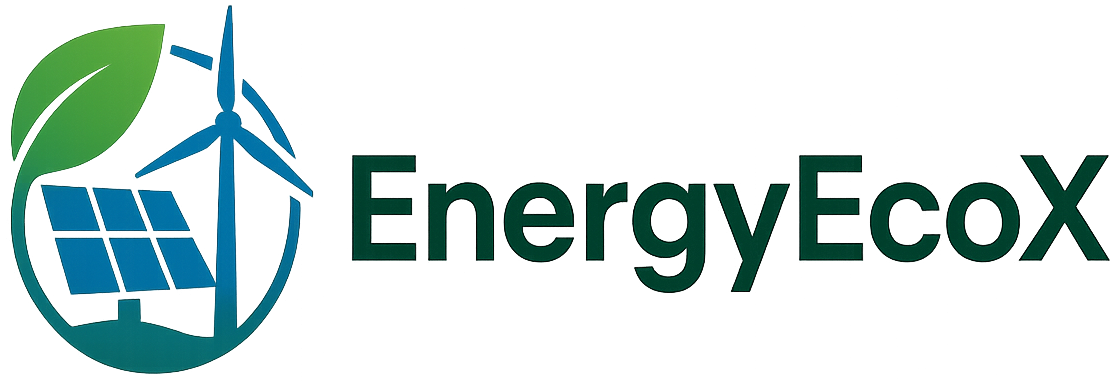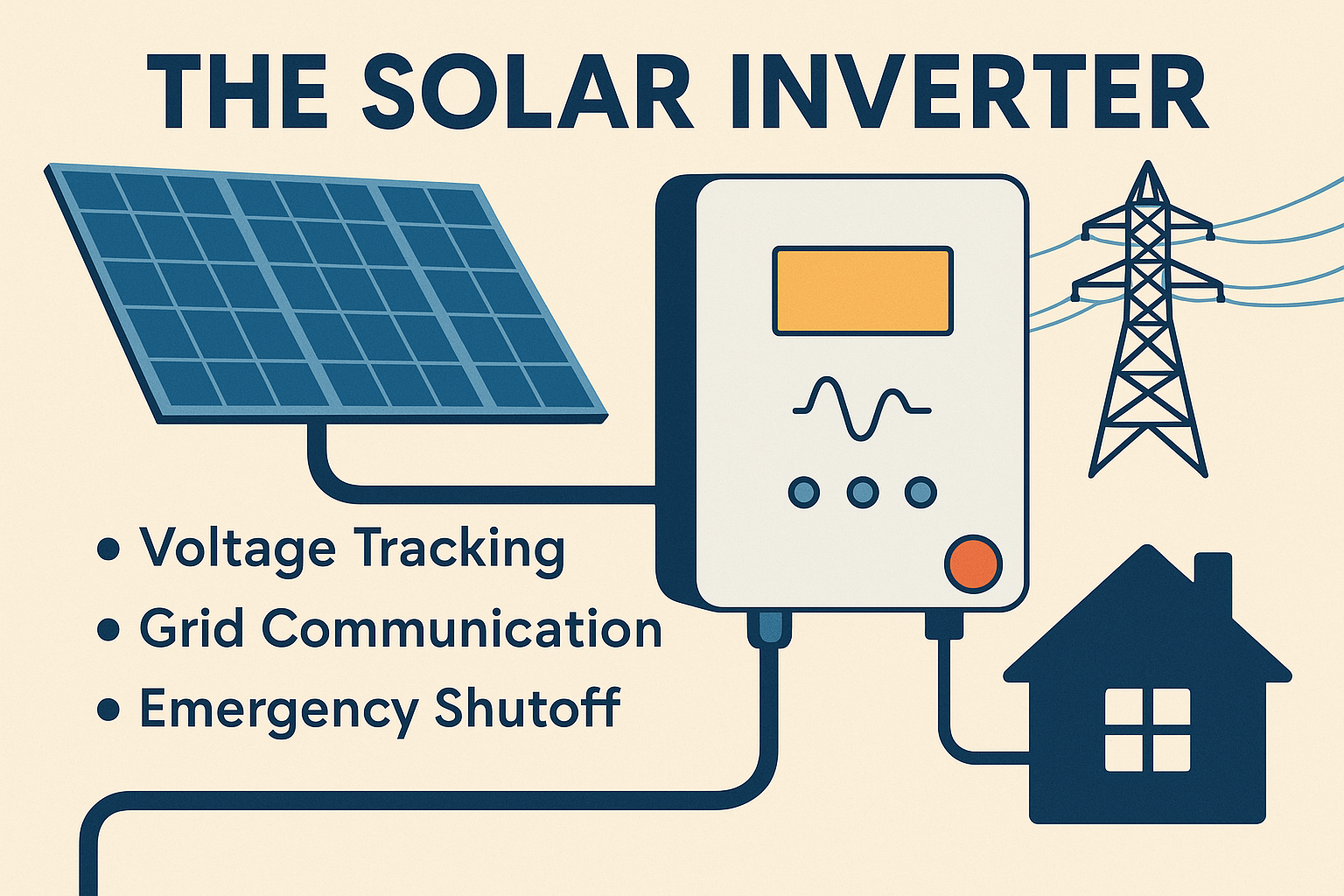Solar power’s central part is, for solar energy, the most crucial element responsible for your solar energy system being efficient. Typically what’s termed the “brains” or the “motor” of the solar gear, the inverter does much more than that which is merely described as converting electricity—it manages energy flow, gives protection, and communicates with the grid. In this we’ll be explaining in full detail what is a solar inverter, its types, and how to choose the perfect one for your personal solar power system.
What Is a Solar Inverter?
A solar inverter is an essential component of any solar power system. Its primary purpose is to convert the direct current (DC) electricity generated by your solar panels into alternating current (AC) electricity, which your home appliances consume. Without an inverter, the electricity generated by your solar panels would be useless in a typical residential or commercial setting.
Solar inverters do not just convert electricity, however. They carry out a number of very important functions, such as:
Voltage tracking
Grid communication
Emergency shutdown
All of which are important to making a solar energy system operate safely and effectively.
Functions of a Solar Inverter

Maximum Power Point Tracking (MPPT)
One of the main duties of a solar inverter is to monitor the voltage level of the solar array. This is known as Maximum Power Point Tracking (MPPT). The inverter constantly changes the voltage and current to find the point where the solar panels deliver the maximum power. This ensures your system operates at its maximum efficiency level irrespective of light conditions.
MPPT is very important because it maximizes energy generation during the day—even when the sun’s position and brightness change.
Grid Communication and Safety
For grid-connected systems, inverters are the interface between your house and the power grid. When there’s a power failure, the inverter prevents any solar-generated electricity from flowing back onto the grid. This is a valuable safety feature for utility personnel, who are repairing lines in the event of a power failure.
Besides, if your home does not use the energy produced by your solar panels in the moment, and your battery bank is full, the inverter can send unused power back into the grid. This usually generates net metering credits from your utility, and you get paid less for your electricity bill.
Electrical Arc Emergency Shutoff
As age advances, solar systems can have material degradation, which poses the risk of dangerous electrical arcs. Anomalies are detected by safety features within inverters, which automatically shut down the system to avoid fire or electrical harm.
Types of Solar Inverters: Which One Is Right for You?
There are four main categories of solar inverters which exist today, with each possessing features engineered for specific types of installations in addition to energy demands.
String Inverters
Suitable for: Simple installations with very high sun exposure.
String inverters are the lowest priced and most widely used inverters on the market. Solar panels are “strung” into multiple groups in this arrangement. Power from all of the panels that are contained in a string is transferred to one inverter.
Though cost-effective, string inverters have one disadvantage: if an entire string of panels is shaded or faulty, performance of the entire string is reduced. They’re therefore best suited for rooftop sections receiving unobstructed, uniform sunlight—generally those receiving good southern exposure.
Advantages:
Inexpensive
Simple to install and maintain
Disadvantages:
Susceptible to shading on any panel
Less versatile for panel monitoring and expansion
Microinverters
Best suited for: Shaded roofs or complex configurations.
Microinverters are located behind each solar panel, DC to AC on a panel basis. This design implies that the output of a single dirty or shaded panel will not decrease the output of the entire system. Each panel is isolated, which is especially advantageous for partially shaded roofs or more than one roof pitch on houses.
With the University of Virginia study, it has shown that microinverters have been able to increase efficiency up to a maximum of 27% on cases with partial shading. Second, panel monitoring as well as each panel’s trouble-shooting are easier facilitated through microinverters.
Pros:
Enhanced shade performance
Independent monitoring of every panel
Better designed to accommodate complex or sloped roofs
Cons:
Higher initial cost
More components with maintenance needs
Power Optimizers
Suitable for: Battery backup system and mid-scale budgets.
Power optimizers is a midway product, they are a blend of the best features of string inverters and microinverters. Like microinverters, they are installed at the back of each panel and help monitor each panel’s performance separately. Instead of DC-to-AC conversion at the panel level, though, they “optimise” the DC output and transfer it to a master inverter.
This system is especially worth it if you need to have maximum efficiency without spending an arm and a leg on a full microinverter system. Power optimizers also make integrating battery storage systems easier, so your panels can charge your battery with minimal energy loss.
Advantages:
Improved performance in partial shading
Monitoring at the panel level
Cheaper than microinverters
Disadvantages:
Still requires a central inverter
A little more complicated to install
Hybrid Inverters
Best for: Homes that currently have battery storage or intend to grow in the future.
Hybrid inverters are best for application with battery storage systems. They invert DC to AC for immediate use as well as AC to DC to charge batteries. They also have smart charge controllers that allocate energy wisely—deciding whether to send energy to your home, the battery, or the grid.
Hybrid inverters are gaining widespread popularity among home owners who wish to be energy independent and benefit from the comfort of utilizing stored electricity during a power outage or peak usage. They’re also future-proofed solutions for homeowners who will add battery storage in the future.
Pros:
Ideal for installing batteries
Flexible and efficient energy management
Cost-efficient solutions offered
Cons:
Expensive to install upfront compared to simple inverters
Can be difficult to install
Choosing the Right Solar Inverter for Your Needs
The right solar inverter relies on several factors:
Roof shading and orientation: If partially shaded panels are planned, microinverters or power optimizers would be best.
System complexity and size: For a simple, small residential system with full sun exposure, a string inverter would be sufficient.
Battery integration: If you are feeding energy back into the grid, hybrid invertors or power optimizers must be used.
Budget: Microinverters are more expensive initially but provide higher long-term performance and monitoring. String inverters are most budget-friendly.
You also need to have a good solar installer who is able to assess your unique situation and advise on the best inverter for your system.

Why Solar Inverters Are the Unsung Heroes of Solar Energy
While solar panels receive all the accolades, solar inverters are actually the MVPs of functionality. Without them, you wouldn’t be able to leverage electricity generated from your panels. Whether voltage optimization, outburst protection, or energy flow control entering and exiting the grid or battery, the inverter’s got your back for making that optimized return on investment a success.
Pick the Proper Inverter for an Intelligent Solar System
Your inverter will be one of the most trouble-causing items of hardware you will own in your solar energy system. Learning about its many diverse purposes and what is on offer, you will be able to make an intelligent choice that saves you money, is more effective, and uses years of safety to its best advantage.
Always ask for several quotes and get advice from solar professionals prior to purchasing to ensure that your selection of inverter is aligned with your system design, your energy requirements, and your budget.


Leave a Reply